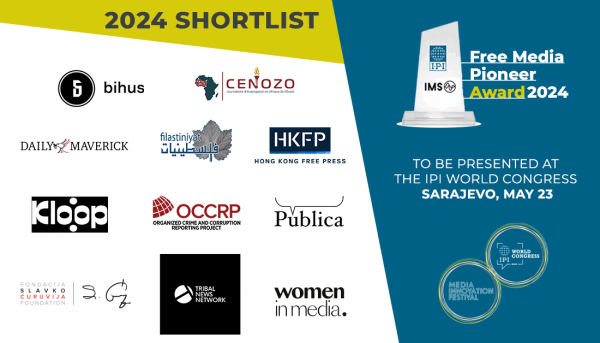The International Press Institute (IPI) is horrified by the kidnapping and possible murder of a well-known television journalist yesterday in Honduras’s second-largest city of San Pedro Sula. IPI urges police to continue their search for Anibal Barrow and to pursue all possible leads in bringing his kidnappers to justice.
Barrow, 58, an agronomist and university professor at the Universidad Nacional Autónoma de Honduras en el Valle de Sula (Unah-vs), also hosts the television program, “Anibal Barrow and Nothing More” on the Globo TV channel. He was reportedly last seen yesterday driving his car, a gray Honda CRV, around 14:30 local time near the city’s municipal sports stadium, accompanied by his daughter-in-law, another relative, and an unidentified male passenger.
Initial police reports indicate that three heavily armed gunmen, who were previously seen driving a white Mitsubishi car without license plates, boarded Barrow’s vehicle at a traffic stop. Barrow’s passengers were later released, separately, unharmed, while the journalist was driven to an area called “Las Cañeras,” located in the Cortes Department between San Pedro Sula and the municipality of San Manuel.
Around 16:30, he was officially reported kidnapped. Barrow’s family also informed local police that they had not received any demands for a ransom. Shortly thereafter, police and military personnel established patrols along the outskirts of San Pedro Sula in the hopes of capturing the kidnappers.
At 18:30, authorities confirmed the discovery of Barrow’s abandoned vehicle in the back of a sugar cane refinery in Las Cañeras, which according to witnesses, also contained a bullet hole and blood. An hour later, local television stations began reporting that Barrow had been murdered, a claim that authorities have not yet confirmed.
Police continued their search for the kidnapped journalist until 22:00, at which time heavy rain and darkness forced them to stop. They then inspected the vehicle and reportedly discovered traces of blood and teeth. Authorities announced, however, that they would continue the search for Barrow until the early hours of Tuesday. Friends and colleagues have since posted a number of messages to his Twitter feed praying for his safety.
“We extend our deepest condolences to the family, friends, and colleagues of Anibal Barrow”, IPI Press Freedom Manager Barbara Trionfi said. “We urge investigators to determine to what extent his journalistic work played a role in his kidnapping and murder. It is the responsibility of the Honduran state to bring those responsible this and other crimes against journalists to justice”, she added.
According to IPI’s Death Watch, 25 journalists have been killed in Honduras since the end of June 2009, when former president Manuel Zelaya was removed from power in what the Organisation of American States referred to as a coup d’état. Only five journalists, however, had been killed in Honduras between 1997 and June 2009.
In August 2012, Honduran president Porfirio Lobo Sosa announced the creation of a series of measures designed to protect Honduran journalists at a forum sponsored by the Society to Protect Journalists. Those measures included: the creation of an investigative body designed to prevent impunity in crimes against journalists, the creation of special legal procedures for crimes against journalists, coordinated projects with the Secretariat for Human Rights, and the removal of defamation and libel penalties. So far no legal measures have been implemented.
While journalists have been targeted because of their profession, the surge in media-related crime has occurred in the context of rising generalised violence: according to a 2011 United Nations study, Honduras now has the world’s highest official murder rate, at 86 homicides per 100,000 residents. In 2008, that number stood at 59.7, according to the Autonomous University of Honduras’s Violence Observatory.


